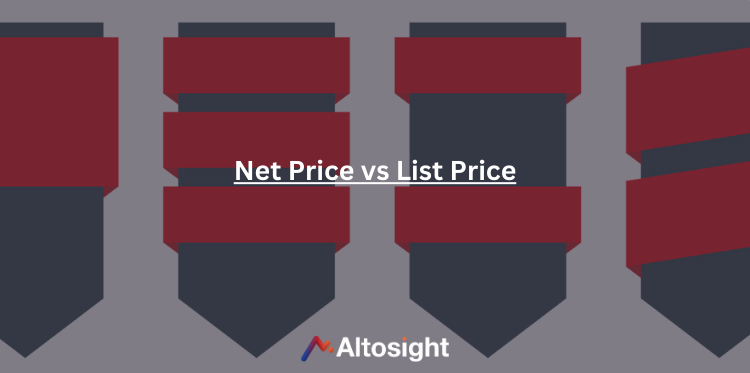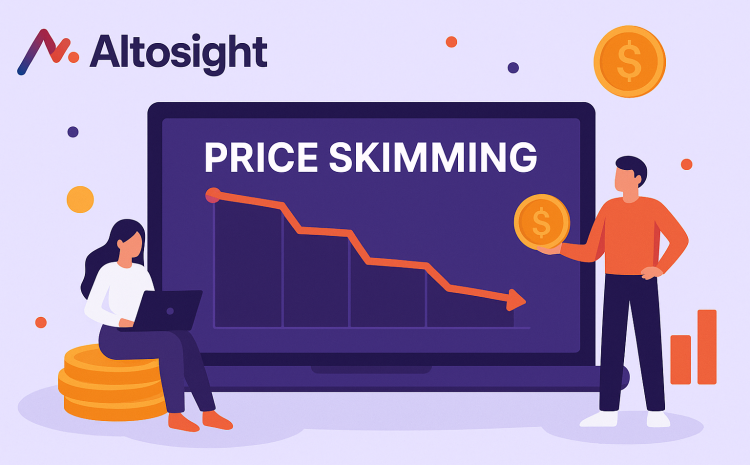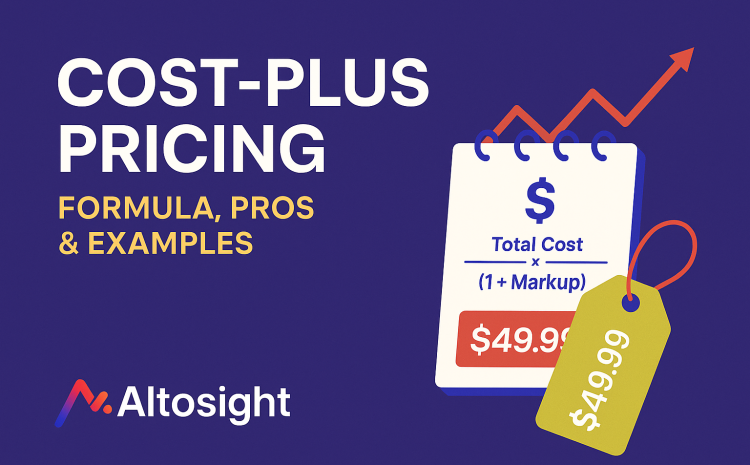
According to the National Retail Federation (NRF), price is the second most crucial factor influencing 30% of consumers buying decisions.
But most merchants and retailers struggle to strike a balance between different pricing models, including net price and list price.
The problem for most businesses is choosing between the two in order to satisfy customers and turn a profit at the same time.
This article explains the difference between these two pricing methods, the formula to calculate the net price, and factors to consider before implementing either price.
What is List Price?
List price, also called headline price, is the maximum value you can get for a product.
In other words, it is the highest amount a buyer can pay before you apply any trade discount, bulk discount, special offer, or coupon.
In some instances, the list price may also be the Manufacturer’s Suggested Retail Price (MSRP) — the price point at which the manufacturer believes the product should be sold.
However, the retailer can set their own list price for a product.
For example, if the Manufacturer’s Suggested Retail Price for a laptop is $1,000, the retailer can use that price. Or, they may decide to increase or reduce it, depending on different factors.
The price the retailer settles for (say, $1,200) is the list price.
The idea is to consider how much you have invested into acquiring a product from the manufacturer or supplier and ensure you not only recoup that investment but also have a good profit margin.
While this is the ideal situation for every business, only a few businesses can set up their pricing structure this way.
For instance, luxury brands with a customer base that values exclusivity and high price tags can run with the list price tactic. A good example is how Apple products are almost always sold at the list price.
But, it is almost impossible for most because competition is fierce, and consumers always look for ways to save a few dollars.
As a result, net price is a popular option.
What is Net Price?
Net price is the price customers are willing to pay for your product or service after you have applied discounts and promos.
For example, if the list price for that laptop is $1,000, and you decide to give your customer a 10% discount, the net price would be $900.
Of course, you may also need to consider other factors like your operation costs, competition, sales tax, and any additional fees when setting the net price.
Pro tip: Before offering any discount or promotion, you must leave enough wiggle room to ensure you can still turn a profit.
Having more flexibility in pricing can enable you to stay competitive and maintain a healthy profit margin even when the market fluctuates.
So, why not stick to the less complicated list price and get maximum value?
Well, customers have choices. E-commerce and price comparison tools allow buyers to compare prices easily across different brands.
Besides, adopting net price allows you to:
- Increase sales volume: The more discounts and promos you offer, the higher the foot or online traffic you get and, ultimately, more sales. Saving a few bucks now and then is always welcome, and people can take advantage of your offers to buy more products.
- Drive loyalty among existing customers: One of the most effective ways to drive conversions and increase customer engagement is by rewarding loyal customers with special promos and discounts. But you must know your customers before implementing this.
- Gain a competitive edge: Implementing net prices can help you win customers from your competitors when the market fluctuates or moves slowly. The customer choice is clear if a competitor sticks to the list price while you go for the net price.
What is the Difference Between Net Price and List Price?
The difference between list price vs. net price is that list price primarily depends on how buyers value your product or service. On the other hand, the net price is determined by how much profit you intend to make after offering discounts and specials.
How to Calculate Net Price Accurately?
Setting the right price for your product or service can be the difference between making a profit and staying competitive or losing money and market share. So before taking the net price route, ensure you are doing it right.
Follow these steps:
- List the cost of acquiring the goods from the manufacturer or wholesaler or the price of human resources if you offer a service. You might also want to include storage or other fixed costs.
- Consider how much profit you want to make.
- Subtract any discount such as loyalty discount, bulk discount, etc.
So, the net price formula is
Net Price = List Price – Discounts
Example 1:
Let us continue with our previous example of the laptop with a list price of $1,000. Suppose you offer a 10% discount to a loyal customer.
From the above formula:
Net Price ($900) = List Price ($1,000) – Discount ($100)
Example 2:
Still, with the laptop scenario: the list price is $1,000, you offer a 10% discount, and there is a VAT (Value Added Tax) of 10% on the item.
Value-added tax is a consumption tax added to goods and services. This fee is standard in most European countries. But you can replace the VAT with the taxes that apply in your country.
To calculate the net price in this context:
Net Price = List Price – Discounts + VAT
So,
Net Price ($920) = List Price ($1,000) – Discount ($100) + VAT ($90)
Pro tip: To limit the discounts, you can restrict customers to using only one promo/coupon. Another option is allowing them to use coupons only on products with a list price (no active discounts).
How to Choose Between List Price and Net Price
Every business and industry is different, so what works for one might not work for others. To decide between list and net price:
Calculate Cost-plus Pricing
List all the costs of that product, like wholesale price or manufacturing, distribution, shipping, taxes, storage, and fees, and your desired profit to determine a list price.
Know Your Customers
Some customer groups will be happy to pay a high list price because they perceive the product as high value.
For example, people believed that the fashion industry wouldn’t be impacted as much by the rise of online purchases because people would still need to try on new clothes before buying them.
However, many international stores have closed over the past few years, and online sales have increased.
But there is still a market for haute couture despite these difficulties because wealthy consumers value exclusivity and are willing to pay top dollar for high-quality pieces.
A brand like Louis Vuitton can’t start giving discounts since that would undermine its exclusivity.
Hence, know your customer before implementing a pricing strategy.
Consider Your Competitors
Whether you implement a net or list price will depend on the product type, the brand behind it, and what the market and your rivals are doing.
If you find your competitors selling a similar product at the list price, it may present you with an opportunity to offer a discount and win customers from your competitors.
However, doing this requires you to stay updated with a fast-evolving marketplace and constantly shifting customer behavior.
A price monitoring tool allows you to track your competitors’ prices across different platforms so you can effectively manage your pricing strategy and identify the best time to take advantage.
The Uniqueness and Value of Your Product or Service
How unique is the product you are selling? Is it readily available elsewhere? Does it have patents or a strong brand behind it?
All these are vital factors to consider before pricing your products. If consumers can readily get the same product elsewhere at a lower price, your customers might switch to your competitors.
The Bottom Line
Price management is a crucial aspect of every retail business, and deciding between net price and list price is part of the process.
In general, list prices represent the highest price a business can charge.
Before determining how much profit margin to build into their list price, business owners must consider consumer demand.
In a slow market, business owners must reduce profit margins or risk low sales.
For the net price, the retailer must determine the price at which a profit is still possible. As a result, discounts and specials provided by sellers are determined by recoupment rates.





